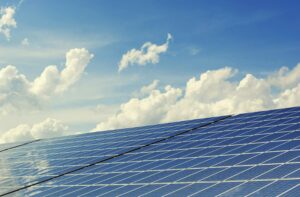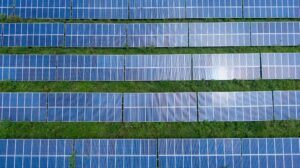Solar Energy
The Solar Energy System Installation Process by Mavericks
Solar installation companies like Mavericks typically follow structured steps to ensure an efficient and safe system is installed. Here are the basic steps:
1. Consultation and Site Evaluation:
• Initial Contact: The process begins with the customer contacting Mavericks to express their interest in installing a solar energy system.
• Information Gathering: Mavericks gathers information about the customer’s current energy consumption, the installation location (home, commercial building, etc.), their budget, and their solar energy goals.
• Site Visit (Optional): Mavericks may send a team to visit the site to assess its suitability for solar panel installation. The evaluation includes examining:
• The orientation and roof of the building: to determine the best angle and slope for installing the panels to ensure maximum exposure to sunlight.
• The condition of the roof: to ensure its ability to support the weight of the panels and other equipment.
• Shade Location: to avoid areas that may be exposed to shade for extended periods during the day.
• Electrical Equipment Location: to determine the best location for installing the inverter, meters, and other components.
2. System Design and Proposal Submission:
• System Design:
• Based on the assessment and information gathered, the Mavericks team designs a solar energy system tailored to the client’s needs. The design includes determining the number and type of solar panels, the size and capacity of the inverter, the type of mounting system, and any additional components required (such as batteries in off-grid systems).
• Proposal Submission:
• Mavericks provides the client with a detailed proposal that includes:
• Specifications of the proposed system.
• Estimate of the amount of energy the system will generate.
• Estimate of the total installation cost.
• Estimate of the payback period.
• Warranty and maintenance terms.
3. Obtaining Approvals and Permits (if required):
• Some areas may require permits from government agencies or electricity distribution companies before installing a solar energy system. Mavericks typically handles these procedures on behalf of the customer to facilitate the process.
4. Installing the Components:
• Installing the Mounting System: Technicians begin by installing the metal structures and racks on the roof or ground that will support the solar panels. The mounting system must be strong and secure to withstand various weather conditions.
• Installing the Solar Panels: The solar panels are attached to the mounting system and connected to each other using special weather-resistant cables.
• Installing the Inverter: The inverter is installed in a suitable location (usually near the main electrical distribution panel) and connected to the solar panels. The inverter converts the direct current (DC) generated by the panels into alternating current (AC) that can be used in the home or building or exported to the grid.
• Installing the Meters: In grid-connected systems, a special electricity meter (bidirectional meter) is installed to record the amount of electricity consumed from the grid and the excess electricity exported to it.
• Battery Installation (in split or hybrid systems): In systems that include energy storage, batteries are installed and connected to the system.
• Electrical Wiring: All electrical components are securely connected according to local and international electrical standards.
5. Testing and Commissioning:
o After installation is complete, the Mavericks team conducts comprehensive system tests to ensure that it is operating properly and safely.
o The system is commissioned and its performance is monitored to ensure that the solar panels are generating electricity and that the inverter is converting it correctly.
• Training and Delivery:
o The Mavericks team trains the customer on how to monitor system performance and understand any indicators or alerts that may appear.
o System documentation, including warranties and operating and maintenance manuals, is delivered.
6. After-Sales Services and Maintenance:
• Mavericks may provide after-sales services such as periodic maintenance, system performance monitoring, and technical support in the event of any problems.
• Components (Basic Components) of Solar Energy Systems
• A solar energy system consists of several basic components that work together to convert sunlight into usable electrical energy:
1. Solar Panels:
• These are the units that absorb sunlight and convert it into direct current (DC) electricity through photovoltaic cells.
2. Mounting System:
• The structure that supports the solar panels and secures them to the roof or ground. It must be strong and weather-resistant.
3. Inverter:
• The device that converts the direct current (DC) generated by the solar panels into alternating current (AC) that can be used to power household and industrial appliances or feed into the electricity grid.
4. Cables and Connectors:
• Used to connect the solar panels to each other and to the inverter, and to connect the inverter to the electrical distribution panel. These cables and connectors must be specially designed for outdoor use and resistant to weather and ultraviolet radiation.
5. Electricity Meter:
• One-way meter (in off-grid systems): Measures the amount of electricity consumed by the solar system.
• Two-way meter (in grid-connected systems): Measures the amount of electricity consumed from the grid and the excess electricity exported to it.
6. Protection System:
• Includes circuit breakers, fuses, and other devices to protect the system from electrical faults and current or voltage surges.
7. Batteries (in off-grid or hybrid systems):
• Used to store the electrical energy generated by the solar panels for use during times of low sunshine or when the grid power is cut off.
8. Charge Controller (in systems that include batteries):
• Regulates the flow of energy between the solar panels, batteries, and electrical load to protect the batteries from overcharging or overdischarging.
Benefits of Using Solar Energy Systems
• Using solar energy systems offers several important benefits:
1. Saving Money on Electricity Bills:
• This is one of the most significant benefits, as solar energy reduces reliance on purchasing electricity from the grid, leading to a significant reduction in electricity bills, and in some cases, even zero.
2. Clean and Renewable Energy Source:
• Solar energy is a sustainable, inexhaustible energy source that produces no harmful emissions during operation, contributing to the fight against climate change and air pollution.
3. Increased Property Value:
• Installing a solar energy system is an investment that increases the property’s value and attractiveness to potential buyers.
4. Energy Independence and Energy Security:
• Relying on solar energy reduces reliance on traditional energy sources with volatile prices and improves energy security at the individual and national levels.
5. Government Incentives and Support:
• Many governments and local authorities offer incentives and financial support to encourage the use of solar energy, such as tax breaks, grants, and soft loans.
6. Low Maintenance Costs:
• Solar energy systems have few moving parts, requiring little maintenance and a long lifespan.
7. Energy Accessibility in Remote Areas:
• Off-grid solar systems can be used to provide electricity in areas where access to a conventional electricity grid is difficult or impossible.
8. Contribution to Environmental Sustainability:
• By using solar energy, individuals and organizations contribute to achieving environmental sustainability goals and reducing their carbon footprint.
• In short, installing a solar energy system by a specialized company like Mavericks represents a smart investment that provides long-term economic and environmental benefits and contributes to a more sustainable future.

